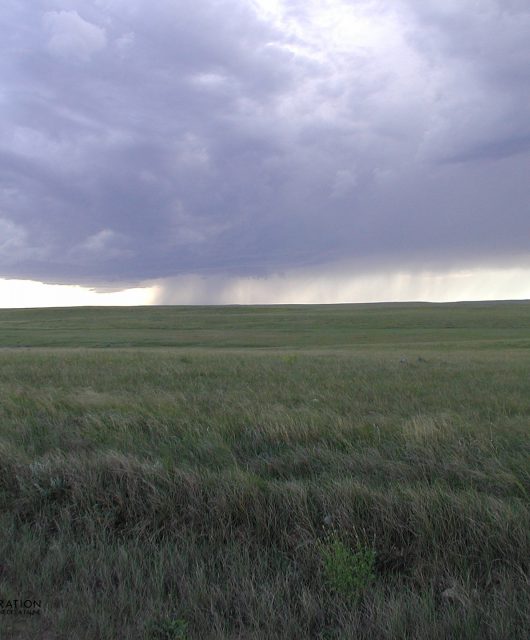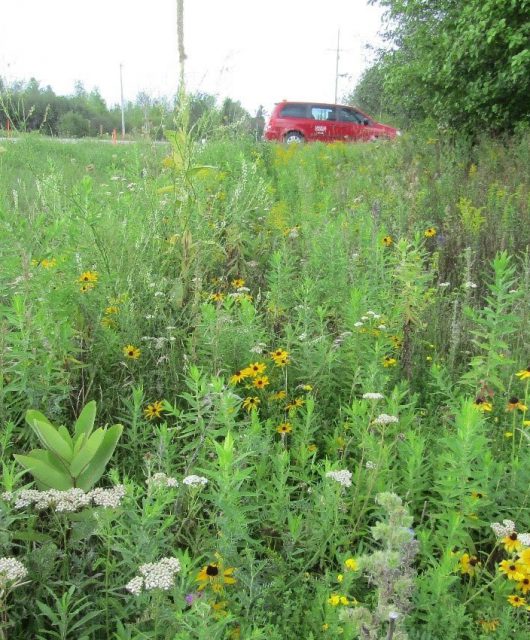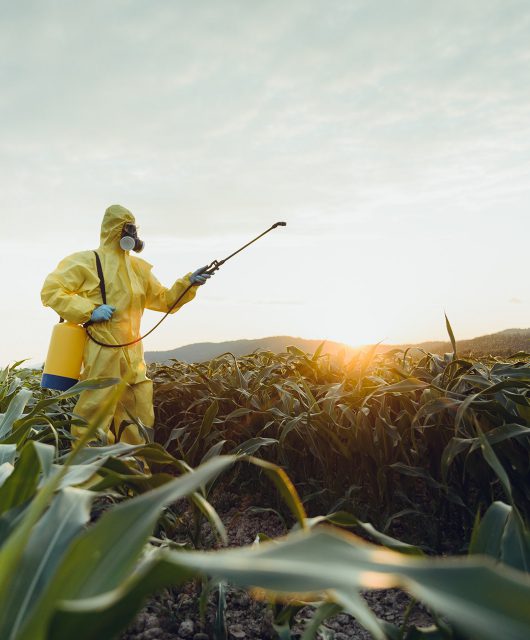Did you know that goats can be an integral part of meadow restoration projects?
In June, the Greater Toronto and Hamilton Area (GTHA) Rights-of-Way (ROW) Community of Practice (CoP) — part of the CWF Rights-of-Way Habitat Restoration Network — visited the City of Toronto’s prescribed grazing pilot at Don Valley Brick Works to learn more about integrating targeted grazing into meadow management.
What is Targeted Grazing?
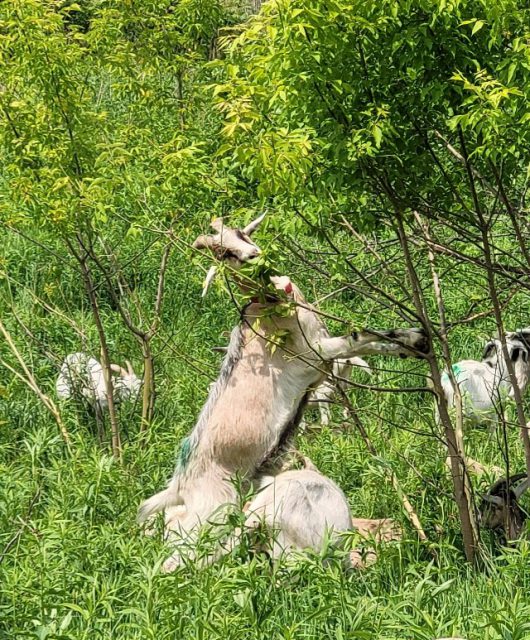
Targeted grazing, also called prescribed grazing, uses ruminants (species like goats, sheep, cows), for vegetation management. Ruminants have four compartments in their stomachs and ‘ruminate’, which means they chew their cud (food returning from their stomach to their mouths for them to continue chewing). Their specialized stomachs allow them to digest food high in fiber such as grass and hay.
Targeted grazing can be done in different ways:
- Allow herds to graze in an area for an extended period of time, providing a longer span of disturbance on the landscape.
- Limit the amount of time and area the ruminants are on site, often as short as two days, and have a high-density of animals grazing to intensify the short-term disturbance of vegetation (or focus on areas with problematic weedy or woody species).
How is This Beneficial for Meadow Restoration and Management?
- Targeted grazing can be an alternative to using chemicals, like herbicides, to temporarily control unwanted woody species. Repeated rounds of targeted grazing are usually required.
- Goats are considered browsers, preferring woody vegetation. This is great news for controlling invasive species like European Buckthorn while leaving some beneficial and unpalatable species, like milkweed, on site.
- Goats provide a form of natural disturbance on the landscape that is essential for keeping grasslands open habitat, both through munching on some vegetation but also through the light digging action from their hooves.
- Upon making the trip through the goats’ digestive system, many seeds become non-viable. This means there is a lower chance of weedy and invasive seeds germinating after being pooped out, which is great news when you’re trying to control or remove them from a site!
- Goats are hardy and can tolerate bad weather while accessing areas difficult for humans to get into.
What We Learned From the Toronto Project
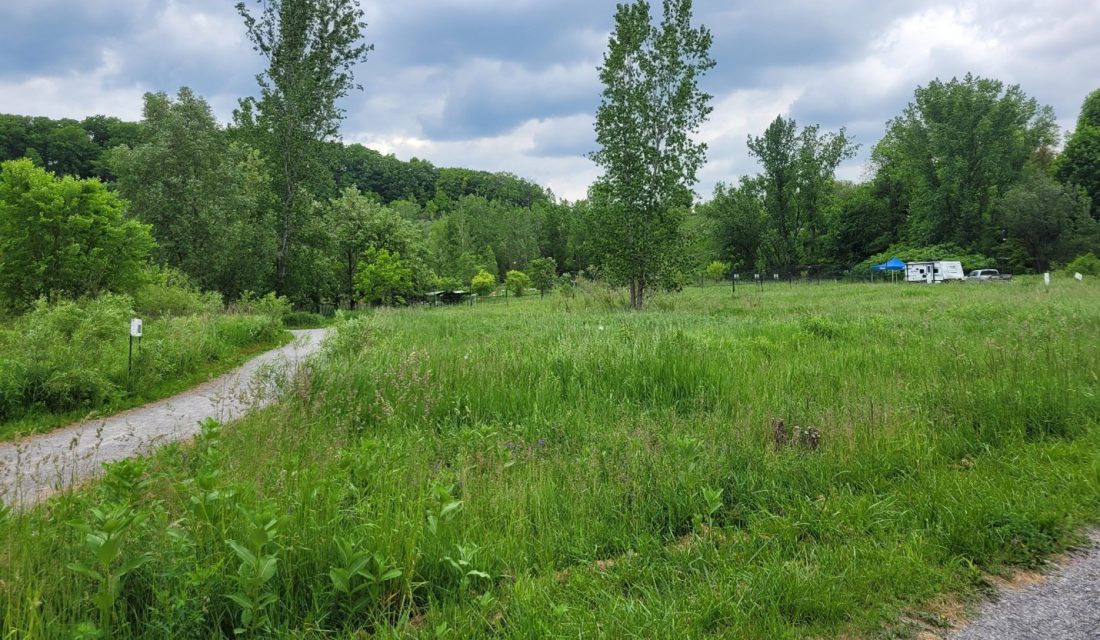
This is the second year for the prescribed grazing pilot in Toronto, and the effects of it are already visible in the meadow at Don Valley Brick Works.
The goats have been hard at work, eating species like buckthorn as well as other woody species not desired in a meadow. This year, the goats were put in a fenced area adjacent to last year’s grazed area to continue maintaining the meadow. The goats avoided the Common Milkweed popping up, preferring the woody and weedy species. We even saw a Monarch Butterfly enjoying the growing meadow!
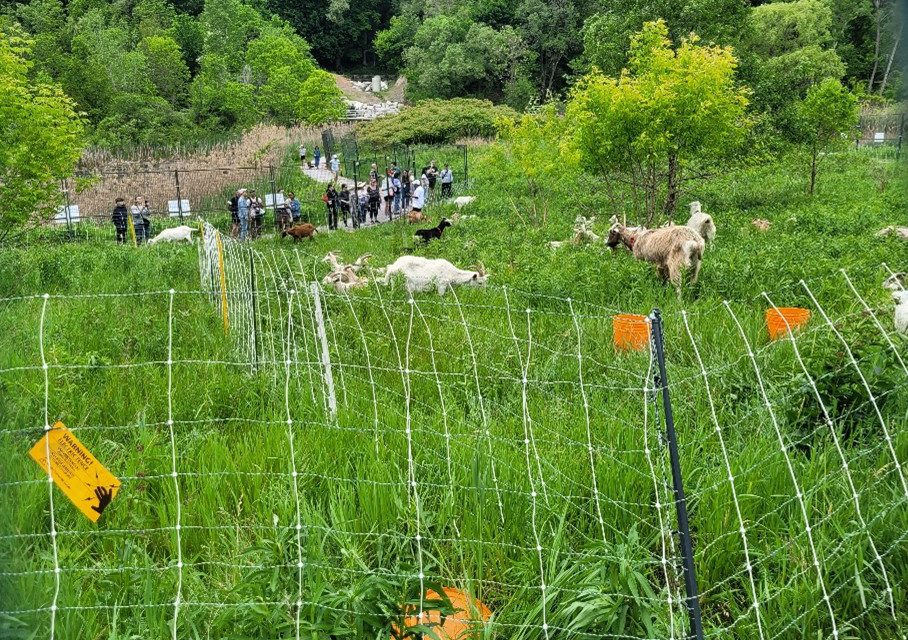
We learned that goats are clever, and it’s important that an experienced goat shepherd sets them up at the project site with fencing (intended to keep people and predators out and goats in), keeping a watchful eye as goats can be mischievous and escape fences. Not just any old goat will do the job; specific breeds of goats are used, and females teach their young what to eat. Thus, goats have to be trained just like humans! Shepherds also make sure their guts are balanced with added minerals.
We also heard how goats for targeted grazing are one “tool in the toolbox” for meadow restoration and are effective for getting the public engaged in restoration. They provide a great opportunity for project leads to talk to the public about restoration, invasive species management, and ecology as a whole.
Some folks from the GTHA Community of Practice spoke to how their respective municipalities are considering starting up their own prescribed grazing pilots, which would be goat-ally awesome.
You herd it here first; keep an eye out for more prescribed grazing pilots around the GTHA!

